I noticed that the resize flicker gets much better when I set TPanel.FullRepaint to False. Since the property exists and is True by default, there must be some reason for that.
How to decide whether it should be set or not?
The help just states:
FullRepaint controls how the panel responds when it is resized. When FullRepaint is true, the entire panel, including the beveled border repaints when the size changes. When FullRepaint is false, only the area inside the beveled border repaints.
http://docwiki.embarcadero.com/Libraries/XE3/en/Vcl.ExtCtrls.TPanel.FullRepaint
That text says what it does, but not why ...
